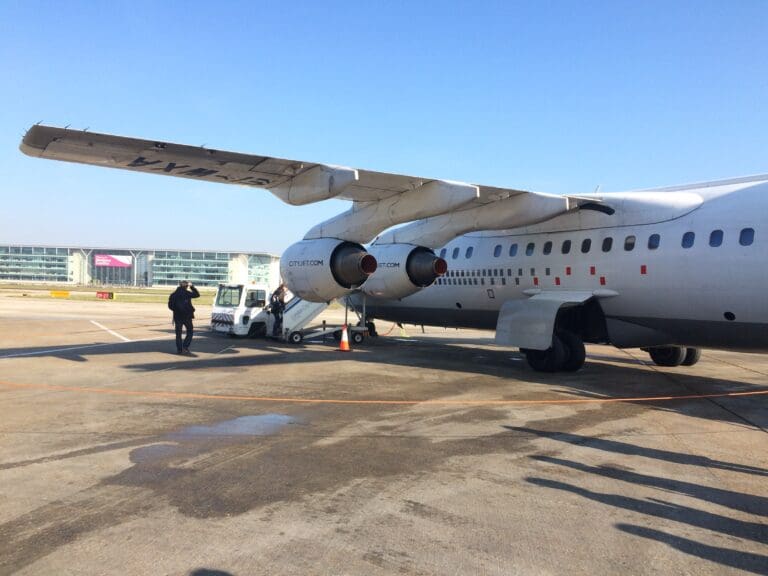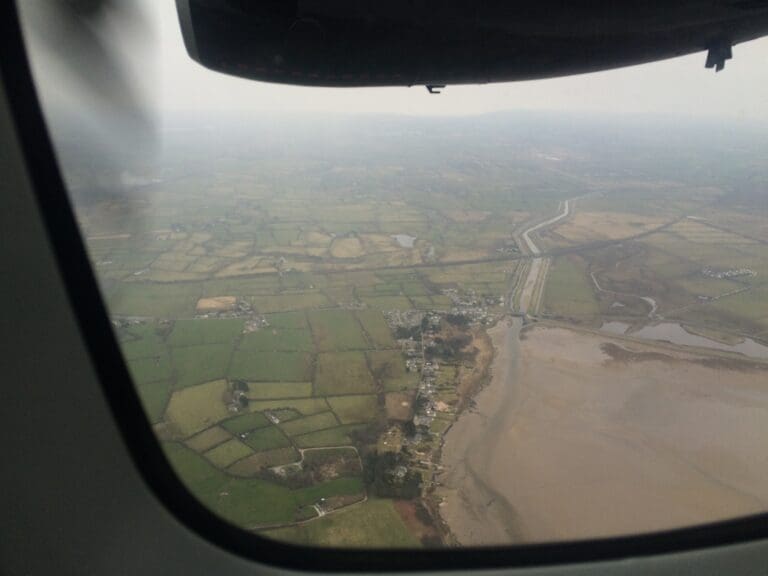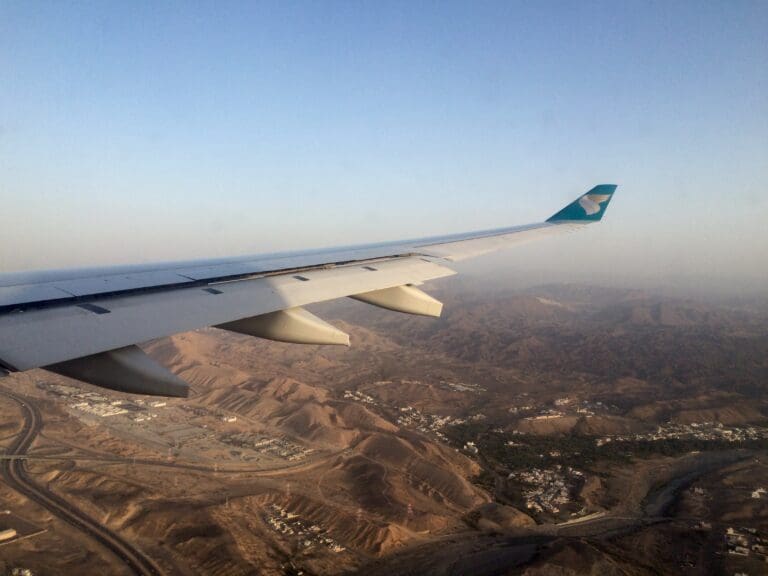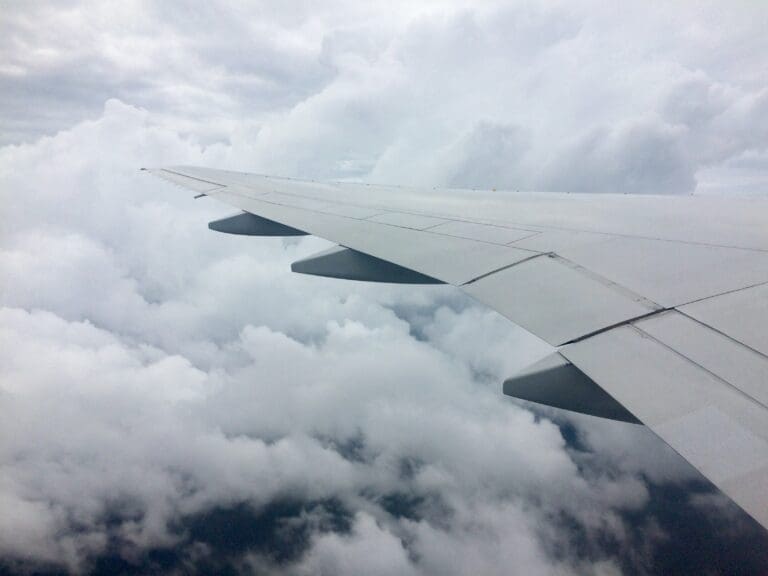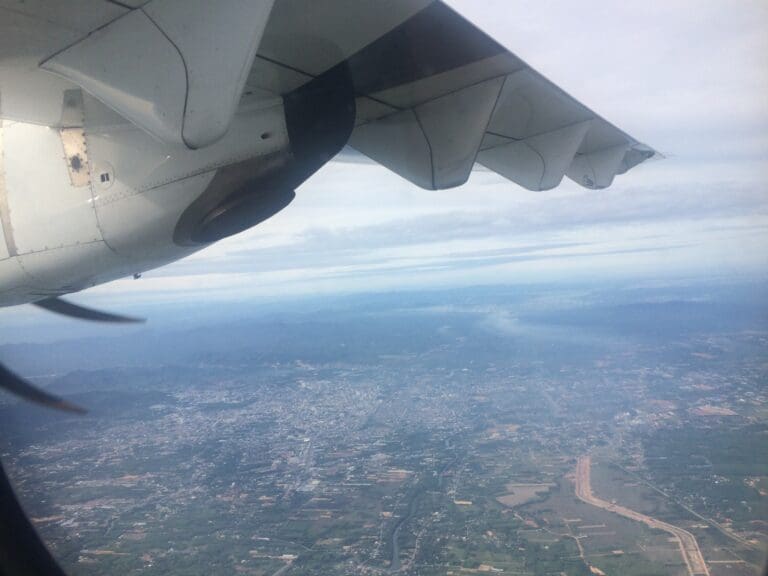Across China on an Old Boeing 777-200: Urumqi to Beijing with China Southern
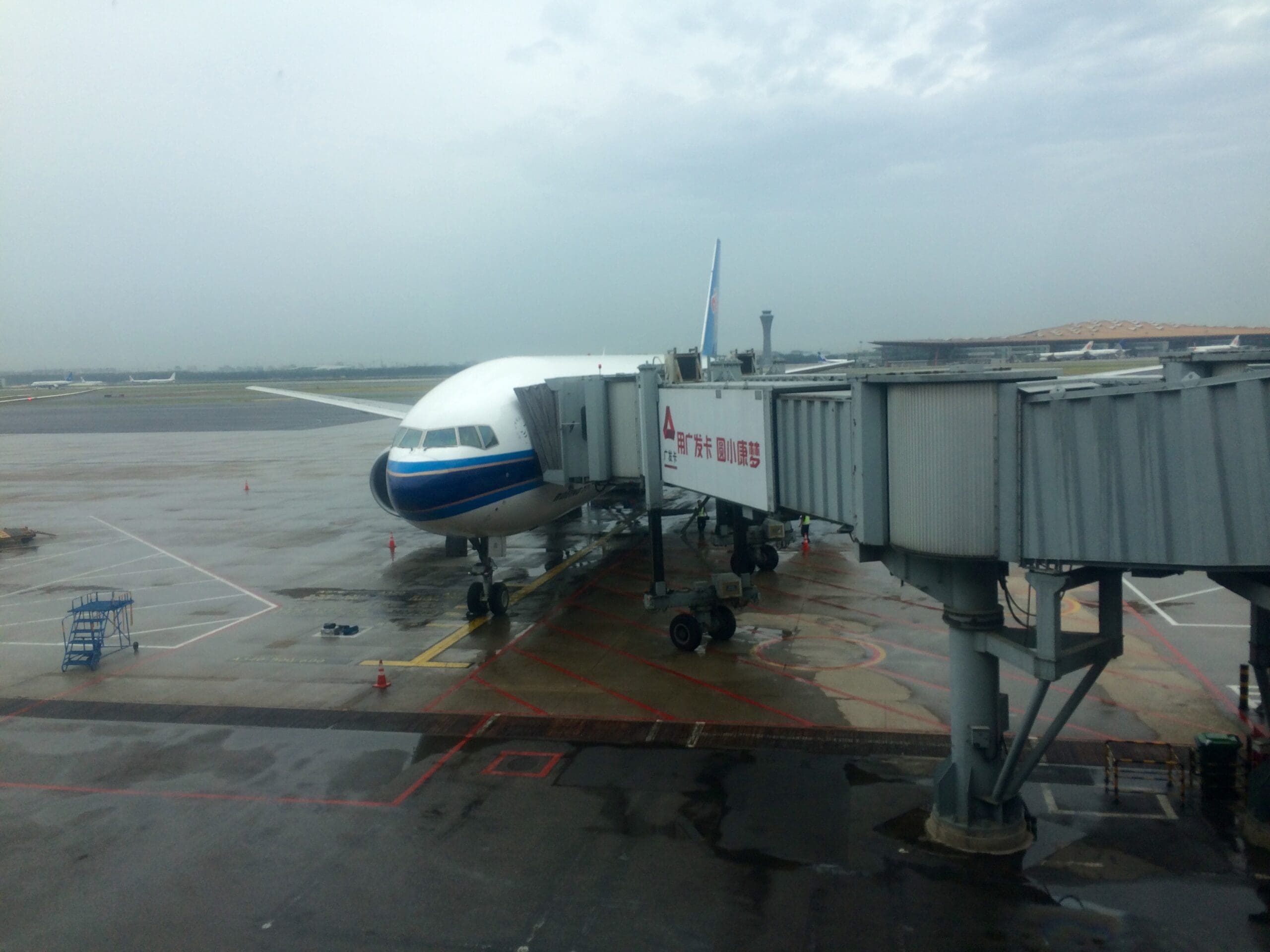
Following an interesting few days spent in Ürümqi and Turpan, it was time to continue on my journey eastwards and fly across China to Beijing. That morning, my flight was scheduled to depart Ürümqi at 1000 according to the official Beijing time, whilst local time this corresponded to 0800. As I had discovered, with both time zones used interchangeably, things can get a little confusing in Xinjiang and you have to take care not to arrive two hours late or early to things! Unlike many Chinese cities, Ürümqi does not have its own metro system and thus the easiest way to reach the airport for a non-Chinese speaking foreigner was to take a taxi.
Giving myself plenty of time, I decided to leave my hotel in downtown Ürümqi at 0500 local time. Arranging a taxi on the spot with reception, this pulled up outside no more than two minutes later and we soon hit the very busy morning streets. Despite being located no more than ten miles from the city centre, that morning, heavy traffic and multiple police checkpoints ensured this to be a slow journey as we wended our way through the city before heading out to the airport. Eventually, forty five minutes after leaving the hotel, the airport appeared and after one final checkpoint, the bus pulled up outside Terminal 3 where plenty of passengers could be seen scurrying about here, there and everywhere, as they shuttled large amounts of luggage between cars and the check-in hall.
At fifteenth place in the leaderboard when it comes to passenger figures, Ürümqi Diwopu Airport is not exactly China’s busiest airport. Despite this, it is fairly large and home to a total of three terminals. Of these, the oldest, Terminal 1, primarily serves low cost and regional flights within Xinjiang. Terminal 2 serves flights to destinations across China operated by all carriers except China Southern Airlines. Meanwhile, the newest terminal, Terminal 3, is China Southern Airlines’ hub and serves the carrier’s domestic services, as well as all international services. At the time of my flight in July 2016, a very decent selection of 31 carriers served Ürümqi, connecting this to most major Chinese airports, as well as to destinations in Afghanistan, Azerbaijan, Georgia, Iran, Kazakhstan, Korea, Kyrgyzstan, Russia, Taiwan, Tajikistan, Turkey, Turkmenistan, the UAE and Uzbekistan.
Once out of the battered and beaten up car, and after handing over a wad of cash to the driver, I made a beeline for the first security check. This was a simple x-ray machine and metal detector combination, whilst a stern looking guard checked my passport and ticket. Inside, I found the terminal’s check-in hall to be bright, spacious, airy and modern, although with the morning rush being in full swing, this was incredibly busy and so I thought it best to head straight to China Southern Airlines’ check-in desks. With these serving all flights to all domestic destinations. With a long meandering queue leading up to these, I spent about fifteen minutes shuffling forwards before reaching a desk where I received nothing by means of a greeting from the China Southern Airlines agent manning this. Once there, a man came running up to the counter and, with their issue clearly being rather urgent, I was required to wait for a couple of minutes whilst whatever this was was resolved. After this, with minimal dialogue, my bag was tagged and sent into the depths of the airport and my boarding pass was printed off and handed to me before I was pointed in the direction of security.
Once at security, a staff member checked my boarding pass, presumably to ensure that I wasn’t on an international flight and thus standing in the wrong place, before I was able to join the long snaking queue. Following twenty minutes of standing in line, I made it to the front of the queue at which point the agent scanned my boarding pass and told me ‘go back’ pointing at the busy China Southern Airlines check-in desks. At this stage, I was a little uncertain of where I should go and so I headed in the direction of their pointed finger and approached the China Southern Airlines staff waiting around the check-in desks. Unfortunately, thanks to language barriers they couldn’t really understand my conundrum and thus advised me to join the check-in queue which by this time was much longer. After five minutes of queuing, I spotted the checked luggage inspection counter out of the corner of my eye and decided that that is where I probably should have been. Indeed, upon arriving there, in front of a scrum of people I spotted my luggage. Ten minutes later, the inspector pointed at my bag and said ‘battery’. Once this had been removed, my bag was resent on its way and I was free to head back to the main security checkpoint. Indeed, this was completely my fault, but, I have to say that this had been a rather chaotic introduction to the world of domestic flying in China!
Following another ten minutes or so of queuing for security, eventually, I passed through this and was free to explore the airside area. By this time, I was left with relatively little time to explore the nooks and crannies of the airport, although from what I could see this featured plenty of shops, cafés and restaurants. For the most part, this was clean and an army of cleaners were omnipresent throughout, although with that considered, I was a little disappointed to find that the toilets were in a filthy state. Meanwhile, as I would find to be the case at most airports in China, connecting to the wifi was impossible without a Chinese phone number.
For planespotters, large windows offered a good view of the selection of aircraft waiting at the stands outside the terminal. There, a sea of China Southern jets of all shapes and sizes could be seen. Whilst the majority of these took the form of Airbus A320 Family and Boeing 737NG jets, I also spotted some locally based Embraer 190s, Boeing 757-200s and the sole Boeing 777-200 waiting at Stand 39 which was being readied for the flight to Beijing.
That day, the task of ferrying us across China to Beijing fell to Boeing 777-21B, B-2051. As an aviation enthusiast, I was delighted to see that there had not been any last minute equipment swaps and I would thus be in for my first and thus far only ride onboard a non ‘ER’ variant of Boeing 777-200. As with all Boeing 777s, this particular aircraft was assembled at Boeing’s Everett plant. Carrying the construction number 27357 and the line number 20, this was the oldest Boeing 777 I had flown on by quite some way. That said, the aircraft was still by no means old having taken to the skies for the first time in November 1995. This made it a little under 21 years old at the time of my flight and the sixteenth oldest Boeing 777 still flying. Today, this aircraft is based in Ürümqi and almost exclusively flies on the high-demand route to 1,515 mile route to Beijing.
Indicating that we were to make a punctual departure, at 0910 passengers were invited to proceed ahead for boarding and soon an orderly queue of passengers began to form. That morning, there did not seem to be much order to this, with all passengers invited to board at once. Joining the queue, this shuffled along at a reasonable pace and soon my boarding pass was scanned and my passport checked before I continued down the jetbridge.

Before I knew it I stepped into the aircraft via the L2 door and found myself in the galley that separates the Boeing’s small Business and Premium Economy cabins, from the large forward Economy cabin. There, I received multiple greetings in English by the army of flight attendants before I turned right and voyaged into the forward Economy section of the aircraft. As I voyaged down the aircraft, I received polite greetings from each and every flight attendant that I passed and soon reached my seat near the front of the rear of Economy cabin, 58K.
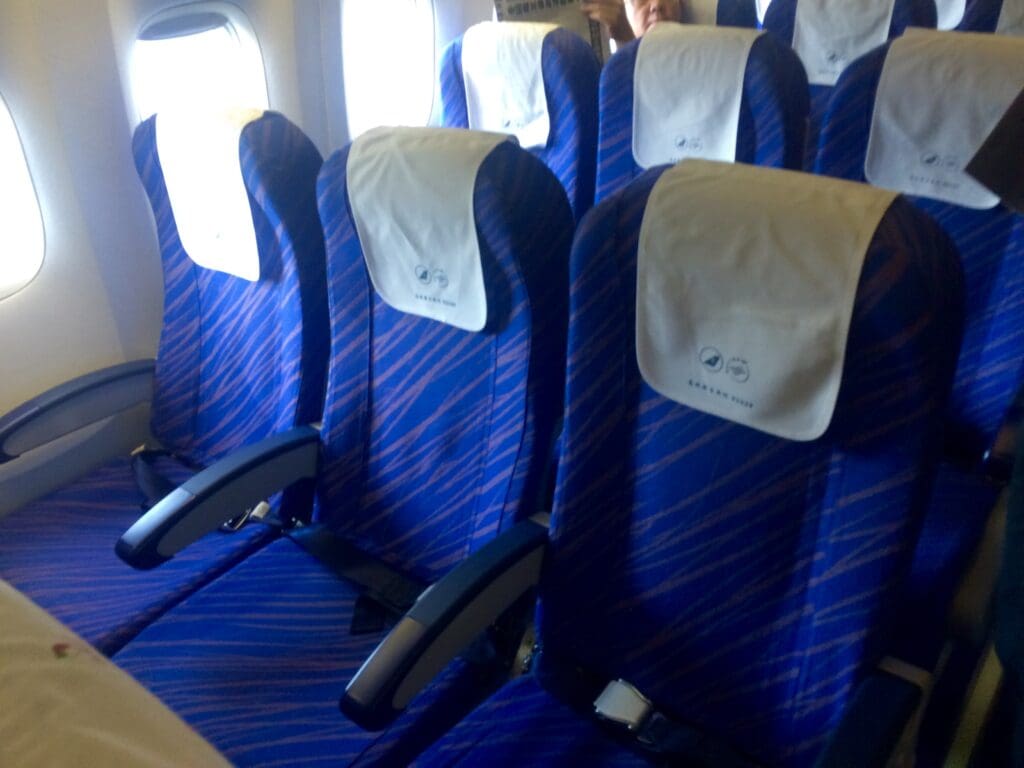
Onboard, seats were arranged in a fairly standard 3-4-3 layout, with these covered in a fabric cover with China Southern Airlines’ standard blue and gold pattern. Once seated, I found the seat to be comfortable and with a decent amount of space, meanwhile the area around my seat was clean and tidy, if not a little worn. Despite the lack of a personal television screen, headphones were provided in each seatback pocket for those who wished to watch the overhead screens during the flight, and accompanied by the Civil Aviation Administration of China’s monthly magazine, a warning card in Chinese and Russian as to what can and can’t be brought into China, a sickbag and a safety card. Indicating that the aircraft is based in Ürümqi, the latter was in Uyghur first, followed by Chinese and English.
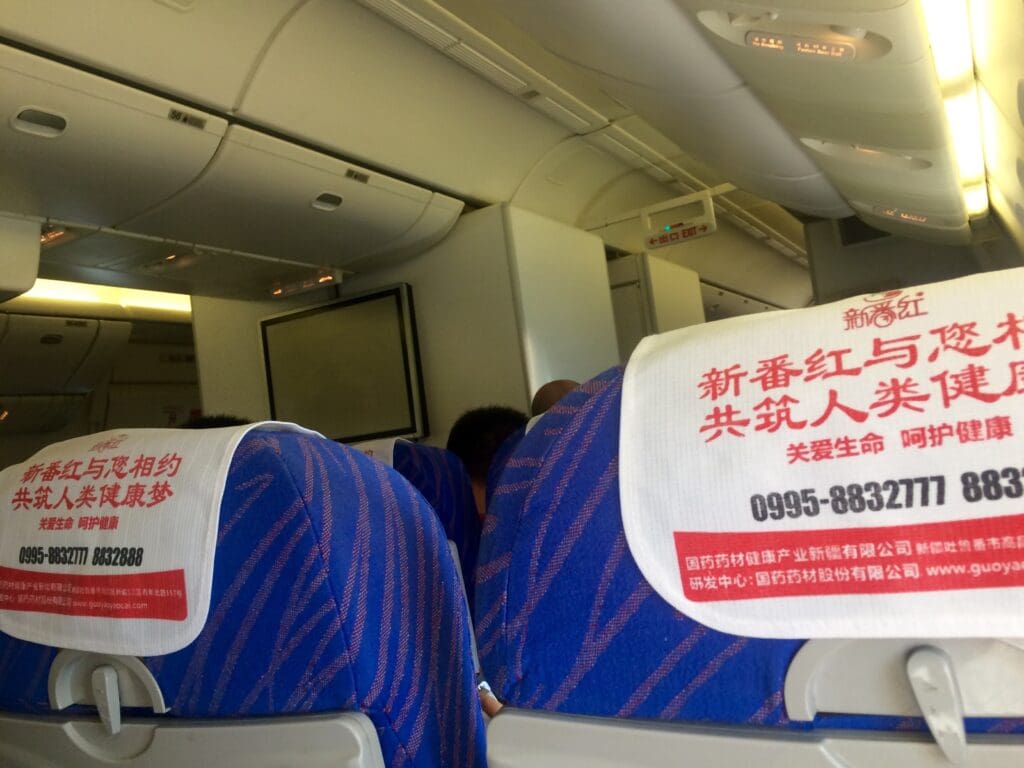
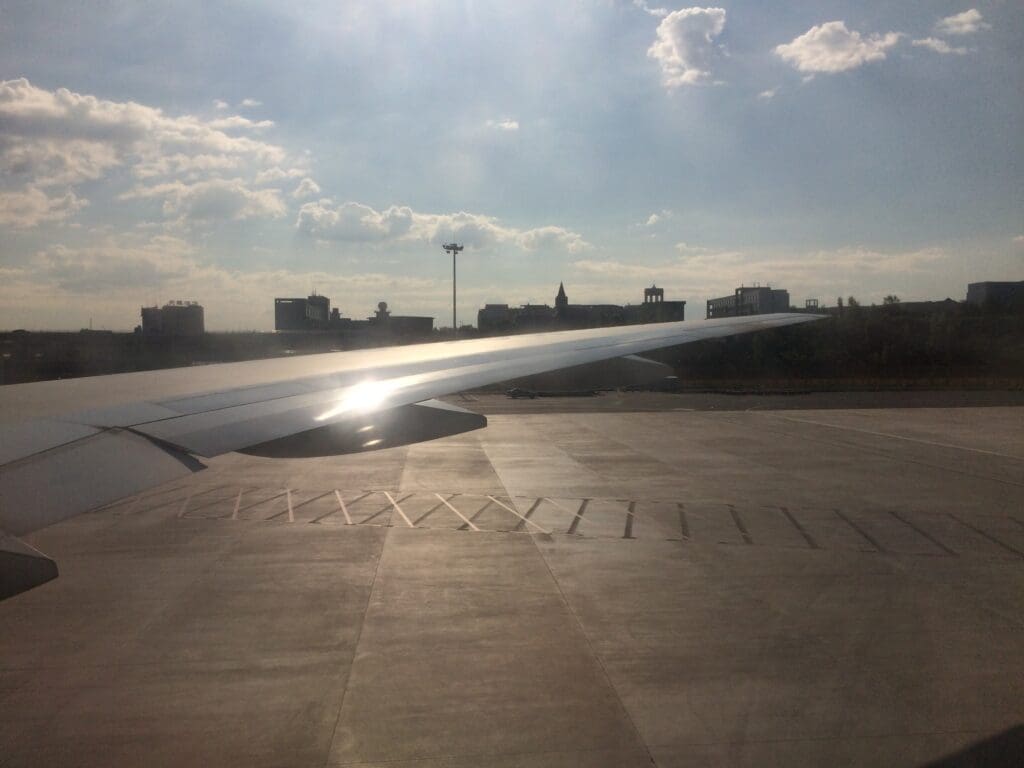
Almost as soon as I had strapped myself in, I was joined by two seatmates and as it turned out, the flight to Beijing seemed to be almost entirely full. With passengers making it onto the aircraft in a timely manner, boarding was completed a full twenty minutes ahead of schedule. Soon, China Southern’s boarding music was interrupted by the purser’s welcome in Mandarin and English, which soon transformed into a safety demonstration. This was then followed by a brief announcement from the captain which reiterated the purser’s welcomes and thanks, before giving a brief update on the flight time and weather in Beijing.
With ten minutes to go until the flight was scheduled to depart, at 0950, the aircraft jolted back from the gate and the two General Electric GE90-85B engines hummed, whirred and vibrated into life, temporarily filling the cabin with the scent of jet fuel as they did so. After a few minutes, the aircraft commenced what seemed to be a fairly long taxi to the end of Runway 25. After leaving the comfort of Terminal 3 behind, the other two terminals came into view and I caught a glimpse of a fleet of relatively new Boeing 737-800 jets operated by Hainan Airlines’ local low cost subsidiary, Urumqi Air.
Eventually, at 1016, the Boeing made its way onto the runway and came to a halt. Following a short pause, the two engines roared into life and we made a powerful takeoff, soon rocketing upwards into the Xinjiang sky. Thanks to the lingering smog, the views on departure were limited, although once we left the airport and city behind, the smog dissipated and the region’s green fields appeared before soon transforming into rocky desert and snowy mountains.
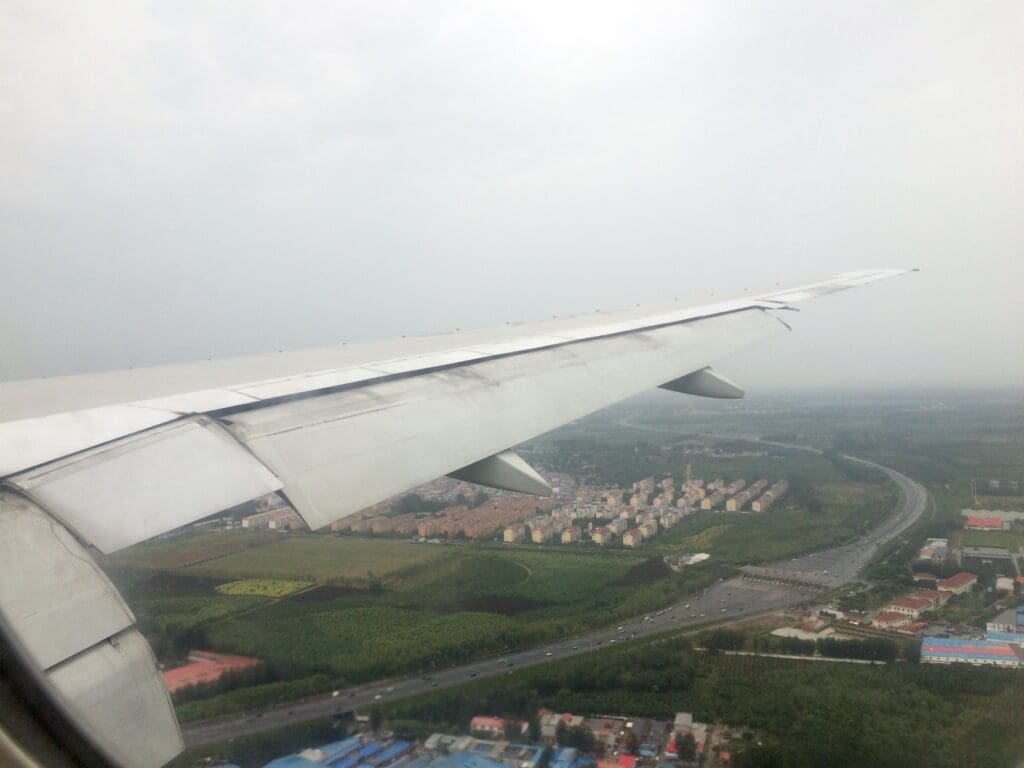

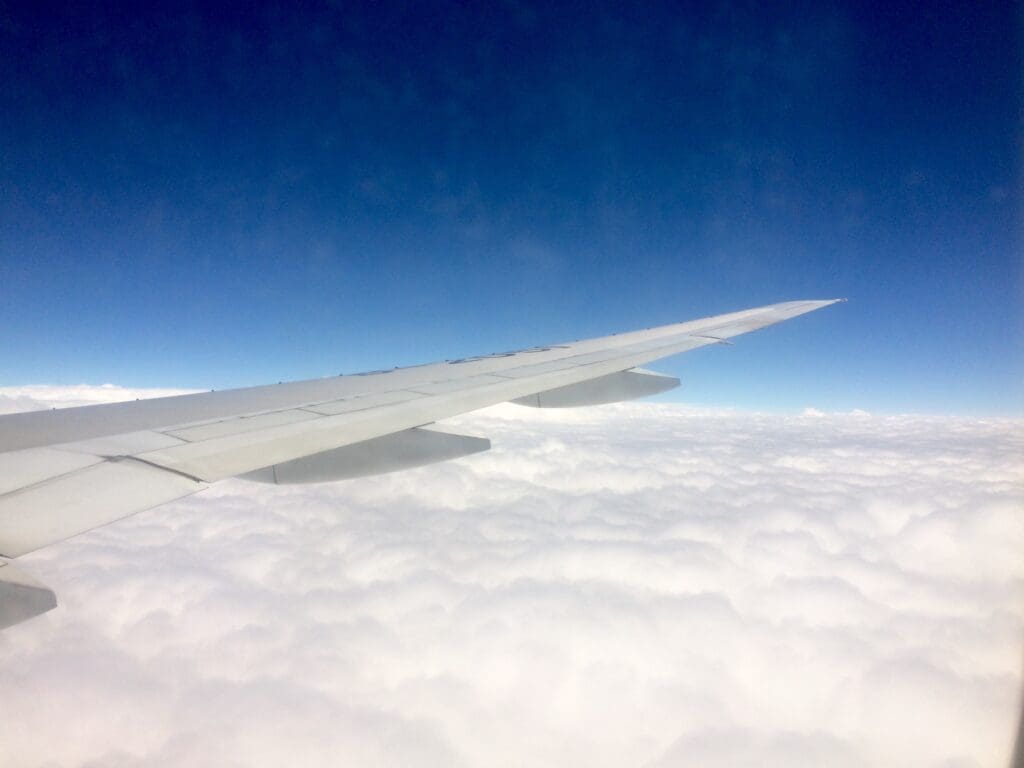
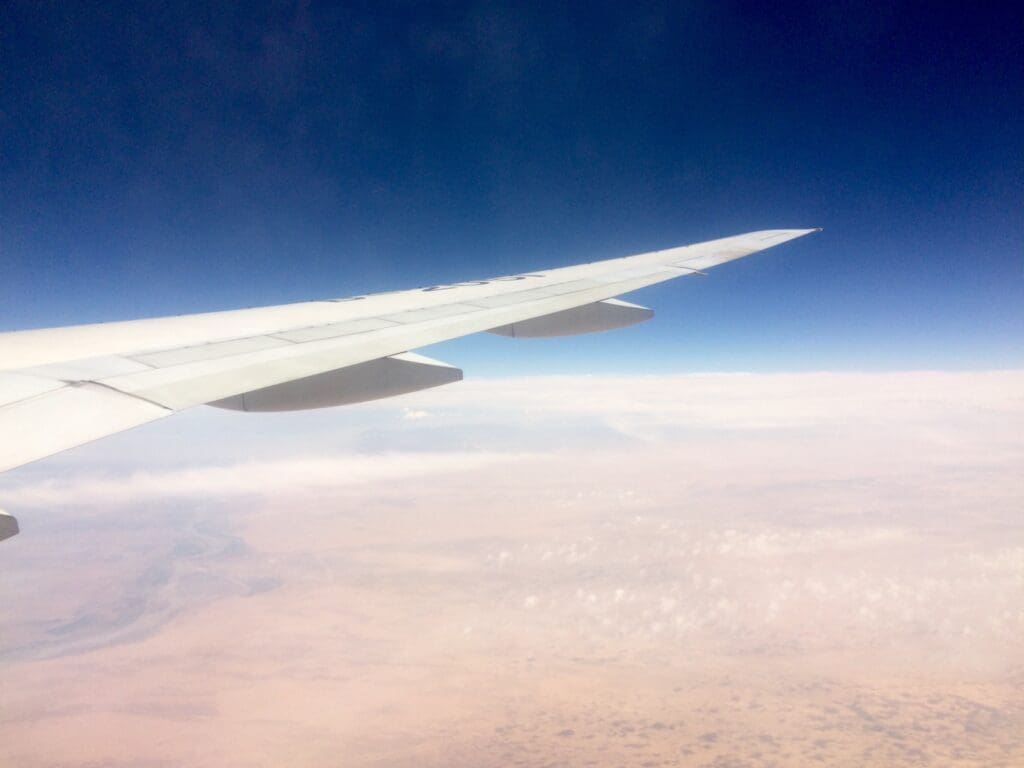
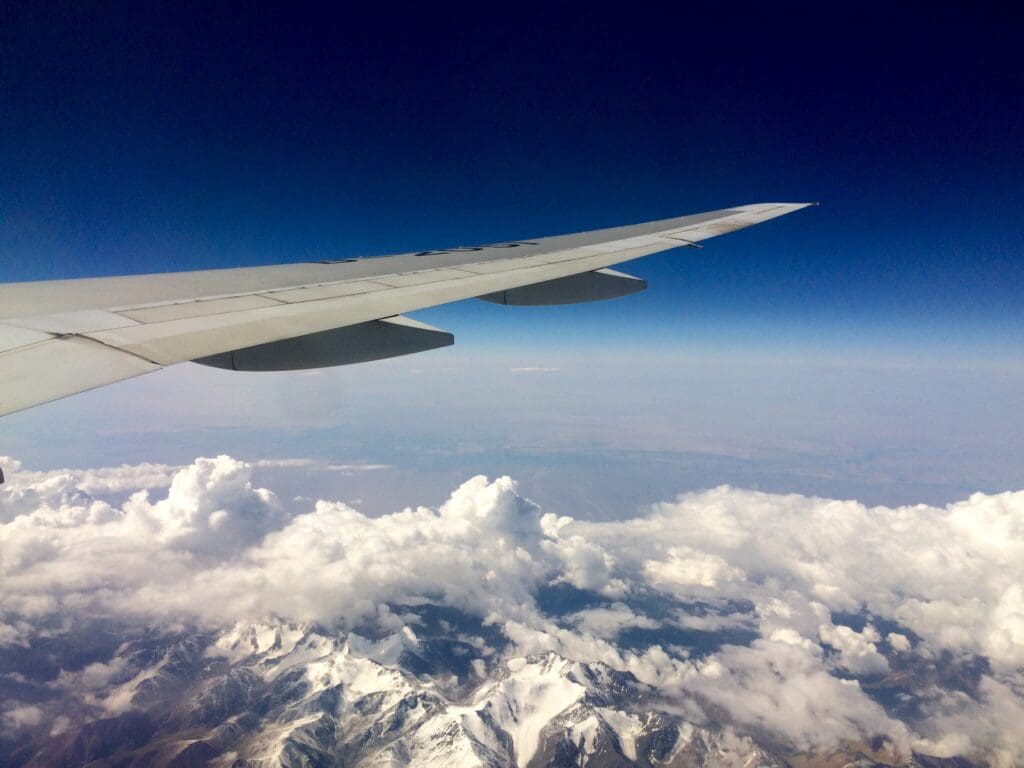
As I later found to be standard practice in China, despite the smooth climb, the seatbelt signs remained illuminated until the aircraft levelled off at its cruising altitude. As soon as these were extinguished, around thirty minutes into the flight, the cabin crew took to the aisles and commenced the onboard service. This consisted of a round of hot and cold drinks, which, clearly placing a high value on hydration, was followed by another twenty minutes later! By the time the Boeing had crossed the border from Xinjiang to Gansu, the skies had clouded over and the crew took to the aisles commencing the meal service. Like most Chinese domestic flights, a full hot meal would be served on this domestic slog and was to take the form of a late breakfast or lunch depending on what time zone you adhered to. That morning, passengers were given the choice of beef or fish. Deciding on the former, soon a China Southern Airlines box was handed over to me along with a boiling hot foil dish containing the main course. Opening up the main dish, this consisted of a delicious if not very oily beef dish with noodles. Meanwhile, the box contained picked vegetables, a chicken salad, bread roll and plain yoghurt, along with cutlery, a serviette and a wet-wipe. Overall, I found this to be of very decent quality and quantity for a three hour or so flight, and thus I was left with no complaints.
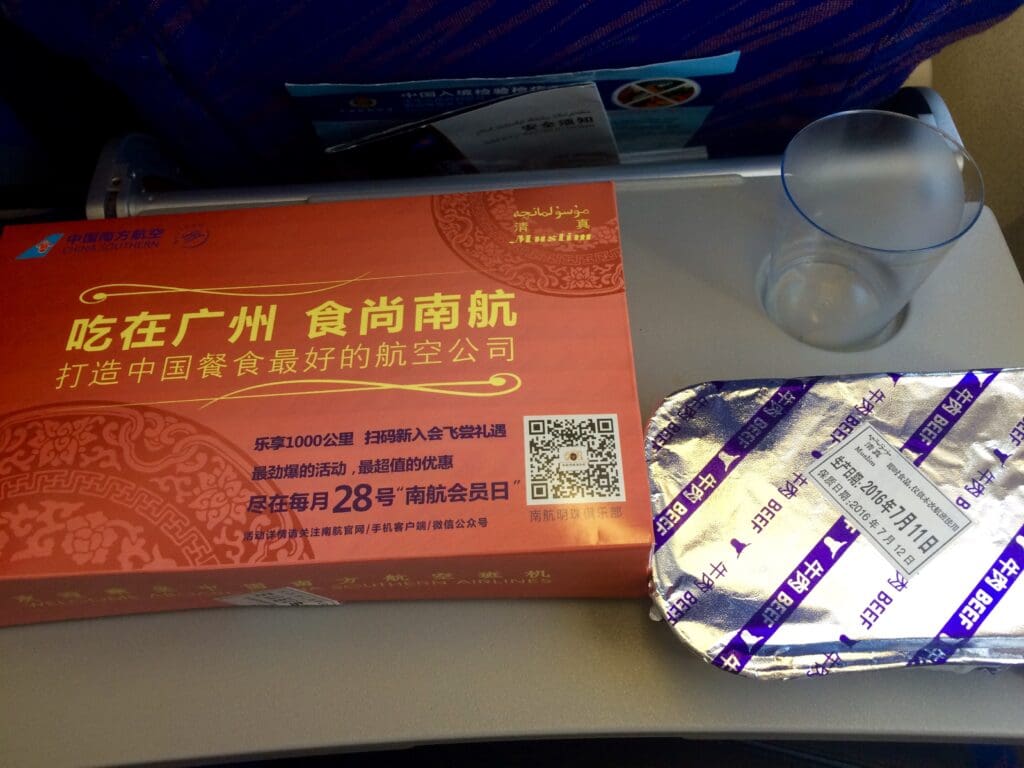
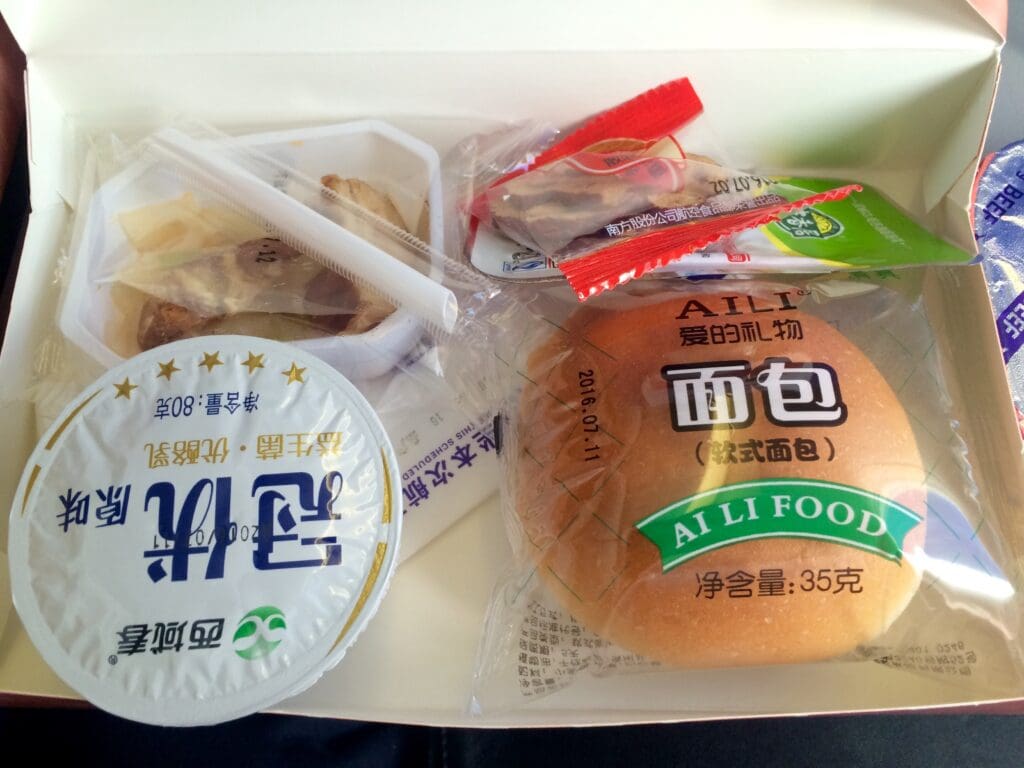
About twenty minutes after the meals were handed out, the crew passed through the cabin collecting the remains of this service. With little to see outside and not being too interested in the Chinese game show playing on the overhead screens, around halfway into the flight I decided to have a morning nap. Heading across China, the Boeing cruised high above the provinces of Gansu and Inner Mongolia, spending a good half of the flight above the latter before reaching Hebei which sits to the northwest of the capital.
By the time I awoke, the aircraft was in the skies of Hebei and could be felt commencing its descent into Beijing. At that time, the crew had just started making their way through the cabin, waking up passengers and ensuring that everything was in place and secure for our arrival. Unfortunately, beneath us a combination of clouds and smog meant that very little of China could be seen below as we twisted and turned before reaching the tops of the clouds.

As we descended into these, the Boeing bounced around a little before the flaps were extended before Beijing’s rain soaked industrial areas appeared near the airport as the landing gear was extended into position. Soon, the sprawl of Beijing Capital Airport appeared and the aircraft crossed over the multiple perimeter fences as a sea of Air China jets came into view. At 1323, the Boeing made a soft touchdown on Runway 36R before decelerating with plenty of vigour. Soon taking a left and vacating the runway, the cabin crew performed the usual post-landing announcement, welcoming all to Beijing, thanking passengers for flying with China Southern Airlines and advising all to remain seated.

Whilst the size of Beijing Capital Airport means that taxis can often be rather long, from our arrival runway, there wasn’t much of a journey in store before we pulled into a stand at Terminal 2. Coming to a halt next to a brand new Xiamen Airlines Boeing 787-8 Dreamliner that had just arrived from, believe it or not, Xiamen, as soon as we stopped the cabin jumped up. Seeing no point in rushing to leave the aircraft, I remained seated and ended up rather happy with my decision as a couple of minutes later I was able to watch as a super-rare Tupolev Tu-204 slowly taxied past operated by North Korean carrier Air Koryo and on its way back to Pyongyang!
Eventually, I stood up, retrieved my bag and wandered forwards, thanking the various crew members I passed and receiving warm thanks in return before stepping off the aircraft and heading up the jet bridge into the terminal, ending my first ever domestic flight in China.
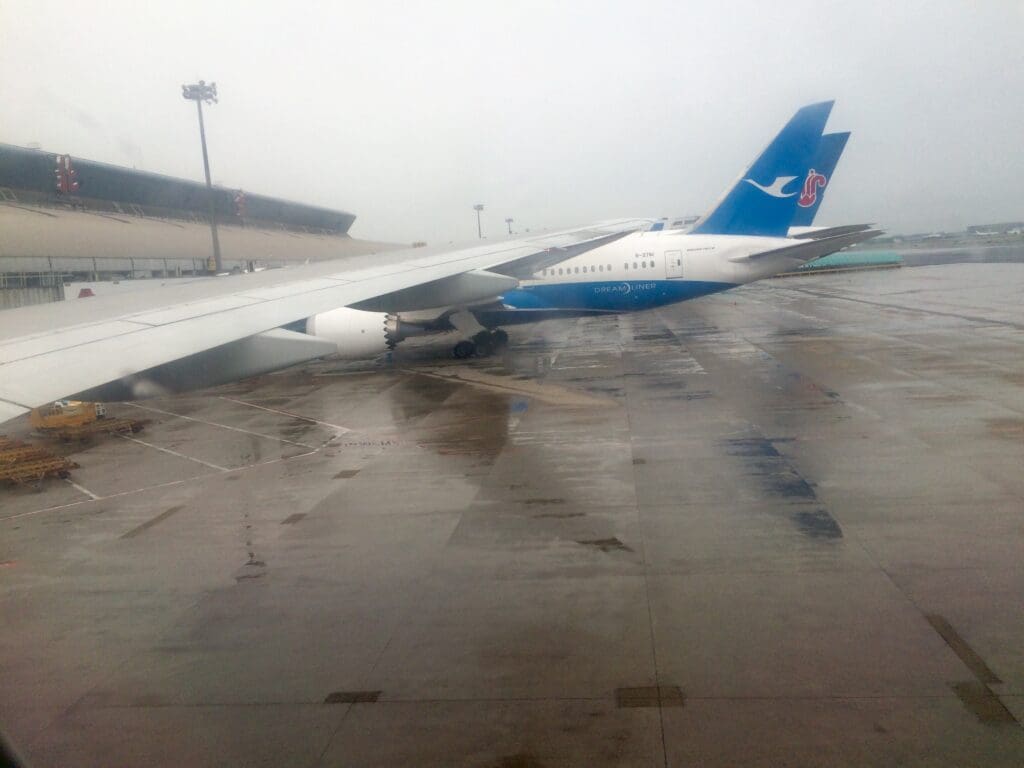
Summary
Ignoring the chaotic start to my journey, overall, I was rather pleased with my domestic ride on China Southern Airlines. Whilst the aircraft was a little battered on the inside, this was clean and comfortable, I arrived in Beijing on time and was left with no complaints about the meal service onboard the flight.

